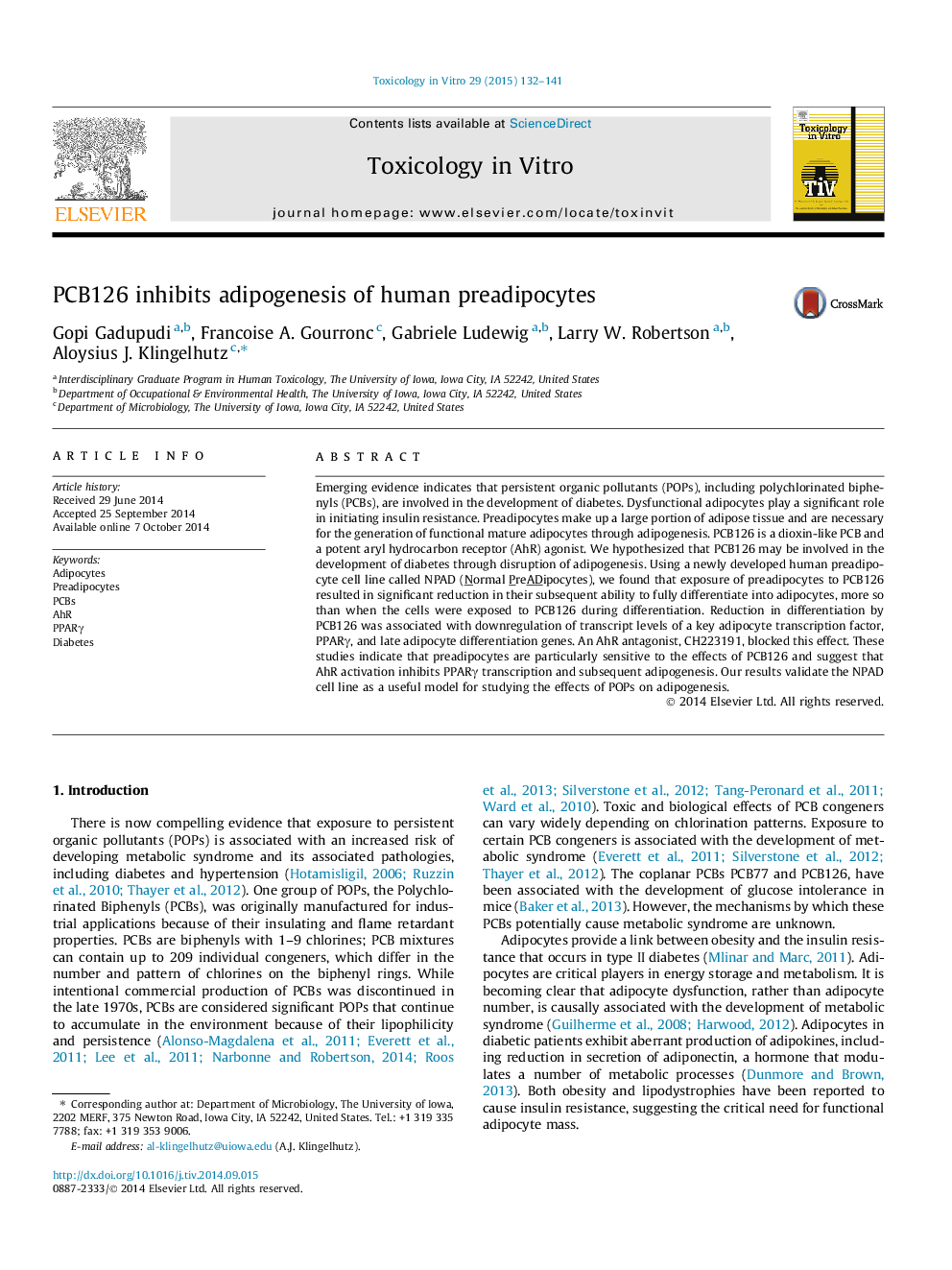| کد مقاله | کد نشریه | سال انتشار | مقاله انگلیسی | نسخه تمام متن |
|---|---|---|---|---|
| 5861526 | 1133761 | 2015 | 10 صفحه PDF | دانلود رایگان |

- PCB126 decreases adipogenesis through its effects on preadipocytes.
- PCB126 does not decrease preadipocyte viability.
- PCB126 reduces transcript levels of PPARγ, the master regulator of adipogenesis.
- The effects of PCB126 on adipogenesis are likely mediated by AhR.
- Immortal human preadipocytes are useful for assessing how POPs affect adipogenesis.
Emerging evidence indicates that persistent organic pollutants (POPs), including polychlorinated biphenyls (PCBs), are involved in the development of diabetes. Dysfunctional adipocytes play a significant role in initiating insulin resistance. Preadipocytes make up a large portion of adipose tissue and are necessary for the generation of functional mature adipocytes through adipogenesis. PCB126 is a dioxin-like PCB and a potent aryl hydrocarbon receptor (AhR) agonist. We hypothesized that PCB126 may be involved in the development of diabetes through disruption of adipogenesis. Using a newly developed human preadipocyte cell line called NPAD (Normal PreADipocytes), we found that exposure of preadipocytes to PCB126 resulted in significant reduction in their subsequent ability to fully differentiate into adipocytes, more so than when the cells were exposed to PCB126 during differentiation. Reduction in differentiation by PCB126 was associated with downregulation of transcript levels of a key adipocyte transcription factor, PPARγ, and late adipocyte differentiation genes. An AhR antagonist, CH223191, blocked this effect. These studies indicate that preadipocytes are particularly sensitive to the effects of PCB126 and suggest that AhR activation inhibits PPARγ transcription and subsequent adipogenesis. Our results validate the NPAD cell line as a useful model for studying the effects of POPs on adipogenesis.
Journal: Toxicology in Vitro - Volume 29, Issue 1, February 2015, Pages 132-141